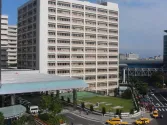
These two headwinds will impact Japan’s retail sector in the near term
Despite the challenges, analysts still maintain an optimistic outlook.
The outlook for Japan’s retail sector remains optimistic, underpinned by strong inbound tourism and rising per-visitor spending. In a report, Savills noted that premier retail submarkets in Tokyo have performed well and saw rental growth over the past half year.
“Indeed, numerous new store openings for luxury, sportswear and outdoor brands, in particular, have driven demand for retail space, largely focused on prime retail streets, leaving a scarcity for premium properties in such areas. A similar situation can be seen in regional retail markets, especially those that are successful in attracting inbound tourism,” the report added.
Here’s more from Savills:
The retail sector may face some headwinds moving forward. Firstly, bifurcation in performance will likely persist, with properties located in peripheral streets and in cities that attract fewer inbound tourists and less domestic footfall likely remaining lukewarm.
Secondly, US tariffs will likely influence consumer behaviour and possibly inbound tourism, likely inhibiting some demand especially for luxury goods, which may trigger a slight slowdown in store openings moving forward. The stronger yen may not bode well, though Japan retail still has a competitive advantage in terms of value for money or renowned service.
Nevertheless, inbound spending remains at elevated levels for the meantime and department stores continued to post record profits. Furthermore, iconic offerings such as the Expo 2025 should promote further inbound tourism. Considering the upcoming Integrated Resort development in Osaka, the government’s ambitious targets for yearly inbound visitors and total spending by 2030 appear to be increasingly within reach.
As such, submarkets catering to inbound tourists should generally see further growth and improvements over the coming year, while another round of strong wage growth also looks promising for domestic consumption.



















 Advertise
Advertise






